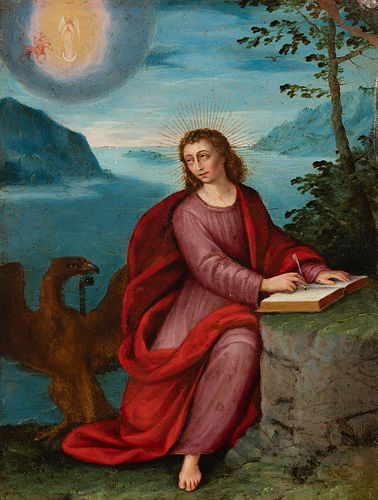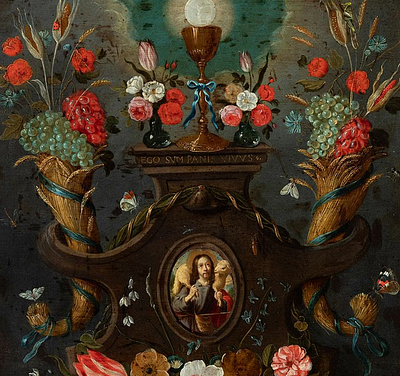Flemish school; first half of the 17th century. "Saint John writing the apocalypse on the island of Patmos". Oil on copper.
Lot 37
About Seller
Setdart Auction House
Carrer Aragó 346
Barcelona
Spain
Setdart Subastas was born in 2004 and is currently the first online art auction in Spain with solidity, prestige and reliability guaranteed by our more than 60,000 users. Setdart has a young, dynamic and enterprising team ready to successfully manage the purchase and sale of art works through custom...Read more
Estimate:
EUR€2,500 - EUR€3,000
$2,631.58 - $3,157.89
Absentee vs Live bid
Two ways to bid:
- Leave a max absentee bid and the platform will bid on your behalf up to your maximum bid during the live auction.
- Bid live during the auction and your bids will be submitted real-time to the auctioneer.
Bid Increments
| Price | Bid Increment |
|---|---|
| EUR€0 | EUR€10 |
| EUR€200 | EUR€25 |
| EUR€500 | EUR€50 |
| EUR€1,000 | EUR€100 |
| EUR€3,000 | EUR€200 |
| EUR€5,000 | EUR€500 |
| EUR€10,000 | EUR€1,000 |
| EUR€20,000 | EUR€2,000 |
| EUR€50,000 | EUR€5,000 |
About Auction
By Setdart Auction House
Sep 21, 2021
Set Reminder
2021-09-21 10:00:00
2021-09-21 10:00:00
America/New_York
Bidsquare
Bidsquare : 21st September - ARAS JÁUREGUI Private Collection - Old Masters, 19th & 20th Century
https://www.bidsquare.com/auctions/setdart-auction-house/21st-september---aras-j-uregui-private-collection---old-masters-19th-20th-century-7429
Setdart Auction House sofia@setdart.com
Setdart Auction House sofia@setdart.com
- Lot Description
Flemish school; first half of the 17th century. "Saint John writing the apocalypse on the island of Patmos". Oil on copper. With inscription on the back. Measurements: 27 x 17 cm. In this work the author gathers a religious story, in which one of the main parts of the Apocalypse of St. John is narrated, which gathers the revelations that the Evangelist had in Patmos. The text of Revelation states that John was on Patmos, a Greek island where, according to most biblical historians, he is considered to have been exiled as a result of anti-Christian persecution under the Roman Emperor Domitian. It was in a cave where he heard a voice "as of a trumpet" (Book of Revelation:10). When he turned around, he saw the figure of the Son of Man. However, in this image, the presence of the multi-headed monster indicates that the author is referring to chapter XVIII of the Book of Revelation, also known as the Book of Revelation. The scene is set in an idealised landscape with an abundance of bluish and greenish tones typical of the Flemish school. In the foreground, seated next to a large stone in front of a tree, is Saint John, dressed in a purple tunic and red cloak, writing in an open book, while he turns his head and gazes skywards. A golden border stands out in this scene, with a winged Woman in prayer, dressed in white on the fourth crescent of the moon, standing next to the multi-headed serpent. The scene is completed by the presence of the eagle, located on the earthly plane, next to the saint, as this is the representation of his emblem as the Tetramorph. Many of the aesthetic elements that form part of the pictorial tradition of the Flemish school can be seen in this work, such as a balanced and harmonious composition. Thus, the descriptive and detailed sense of the Flemish primitives is maintained, especially in the careful treatment of the canvases and the rigorous drawing, as well as the emphasis on space based on empirical knowledge and not on studies of perspective. The chromaticism is also reminiscent of the works of the Flemish masters of the previous century.
- Shipping Info
-
In-house shipping available. Please inquire at admin@setdart.com.
-
- Buyer's Premium



 EUR
EUR CAD
CAD AUD
AUD GBP
GBP MXN
MXN HKD
HKD CNY
CNY MYR
MYR SEK
SEK SGD
SGD CHF
CHF THB
THB

















